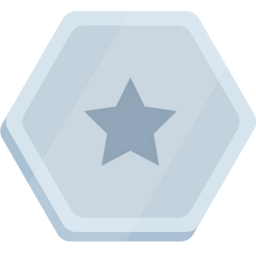Pham Viet Hung
Учасник із 2023
Срібна ліга
Кількість балів: 2630
Учасник із 2023

Obtain a competitive advantage through DevOps. DevOps is an organizational and cultural movement that aims to increase software delivery velocity, improve service reliability, and build shared ownership among software stakeholders. In this quest you will learn how to use Google Cloud to improve the speed, stability, availability, and security of your software delivery capability. DevOps Research and Assessment has joined Google Cloud. How does your team measure up? Take this five question multiple-choice quiz and find out! Looking for a hands on challenge lab to demonstrate your skills and validate your knowledge? On completing this quest, enroll in and finish the additional challenge lab at the end of this quest to receive an exclusive Google Cloud digital badge.
This fundamental-level quest is unique amongst the other quest offerings. The labs have been curated to give IT professionals hands-on practice with topics and services that appear in the Google Cloud Certified Associate Cloud Engineer Certification. From IAM, to networking, to Kubernetes engine deployment, this quest is composed of specific labs that will put your Google Cloud knowledge to the test. Be aware that while practice with these labs will increase your skills and abilities, we recommend that you also review the exam guide and other available preparation resources.
This course introduces Vertex AI Studio, a tool to interact with generative AI models, prototype business ideas, and launch them into production. Through an immersive use case, engaging lessons, and a hands-on lab, you’ll explore the prompt-to-product lifecycle and learn how to leverage Vertex AI Studio for Gemini multimodal applications, prompt design, prompt engineering, and model tuning. The aim is to enable you to unlock the potential of gen AI in your projects with Vertex AI Studio.
This course teaches you how to create an image captioning model by using deep learning. You learn about the different components of an image captioning model, such as the encoder and decoder, and how to train and evaluate your model. By the end of this course, you will be able to create your own image captioning models and use them to generate captions for images
This course introduces you to the Transformer architecture and the Bidirectional Encoder Representations from Transformers (BERT) model. You learn about the main components of the Transformer architecture, such as the self-attention mechanism, and how it is used to build the BERT model. You also learn about the different tasks that BERT can be used for, such as text classification, question answering, and natural language inference.This course is estimated to take approximately 45 minutes to complete.
This course will introduce you to the attention mechanism, a powerful technique that allows neural networks to focus on specific parts of an input sequence. You will learn how attention works, and how it can be used to improve the performance of a variety of machine learning tasks, including machine translation, text summarization, and question answering. This course is estimated to take approximately 45 minutes to complete.
This course gives you a synopsis of the encoder-decoder architecture, which is a powerful and prevalent machine learning architecture for sequence-to-sequence tasks such as machine translation, text summarization, and question answering. You learn about the main components of the encoder-decoder architecture and how to train and serve these models. In the corresponding lab walkthrough, you’ll code in TensorFlow a simple implementation of the encoder-decoder architecture for poetry generation from the beginning.
This course introduces diffusion models, a family of machine learning models that recently showed promise in the image generation space. Diffusion models draw inspiration from physics, specifically thermodynamics. Within the last few years, diffusion models became popular in both research and industry. Diffusion models underpin many state-of-the-art image generation models and tools on Google Cloud. This course introduces you to the theory behind diffusion models and how to train and deploy them on Vertex AI.
Щоб отримати кваліфікаційний значок, пройдіть курси "Introduction to Generative AI", "Introduction to Large Language Models" й "Introduction to Responsible AI". Пройшовши завершальний тест, ви підтвердите, що засвоїли основні поняття, які стосуються генеративного штучного інтелекту. Кваліфікаційний значок – це цифровий значок від платформи Google Cloud, який свідчить, що ви знаєтеся на продуктах і сервісах Google Cloud. Щоб опублікувати кваліфікаційний значок, зробіть свій профіль загальнодоступним, а також додайте значок у профіль у соціальних мережах.
Це ознайомлювальний курс мікронавчання, який має пояснити, що таке відповідальне використання штучного інтелекту, чому воно важливе і як компанія Google реалізує його у своїх продуктах. Крім того, у цьому курсі викладено 7 принципів Google щодо штучного інтелекту.
У цьому ознайомлювальному курсі мікронавчання ви дізнаєтеся, що таке великі мовні моделі, де вони використовуються і як підвищити їх ефективність коригуванням запитів. Він також охоплює інструменти Google, які допоможуть вам створювати власні додатки на основі генеративного штучного інтелекту.
Це ознайомлювальний курс мікронавчання, який має пояснити, що таке генеративний штучний інтелект, як він використовується й чим відрізняється від традиційних методів машинного навчання. Він також охоплює інструменти Google, які допоможуть вам створювати власні додатки на основі генеративного штучногоінтелекту.